Introduction: In this article, James Pylant concludes a “whodunit” story that mystified police and townspeople alike in Weston, Massachusetts, in 1904. James is an editor at GenealogyMagazine.com and author for JacobusBooks.com, is an award-winning historical true-crime writer, and authorized celebrity biographer.
Recap: On the afternoon of 31 March 1904, Edward Page came home to find the body of his 41-year-old daughter, Mabel, in her upstairs bedroom in Weston, Massachusetts. Someone mysteriously stabbed her to death and quietly slipped away, unnoticed, in the broad daylight of a small town.
“I cannot understand the murder of my daughter at all, for she had no enemies as far as I know, there was no robbery, and she was not assaulted,” Edward Page told a Boston Herald reporter.
For more details of the story up to this point, reads Part I and Part II.
On 24 January 1905, a jury found Charles L. Tucker guilty of murdering Mabel Page. The strange case had taken many shocking twists and turns, with more to come after the conviction.
Motion for a New Trial Denied Again
One year later, in January 1906, Tucker’s counsel lost the second motion for a new trial.
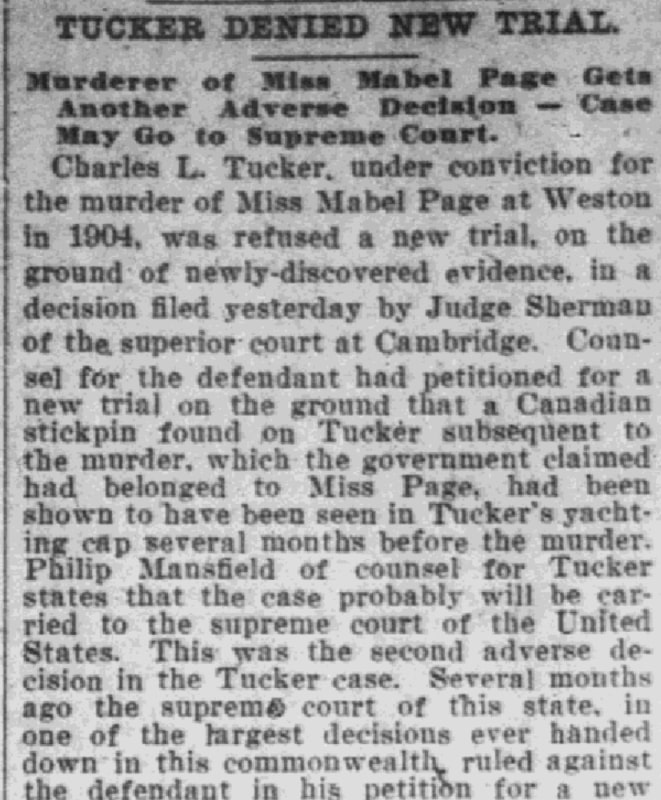
The conclusion of this article reads:
In conclusion the court said: “The prisoner had had all his rights carefully guarded and preserved for him, and he is not entitled to a new trial.”
Wife of Mysterious ‘Morton’ Says He Committed Murder
Two days after Tucker’s counsel lost the second motion for a new trial, a new claim emerged about the mysterious J. L. Morton note, which was a slip of paper found near Mabel Page’s body that no one could explain. On the evening of 24 January 1906, a 35-year-old blonde appeared at a police station in Brooklyn, New York, excitedly announcing that her husband was the mysterious J. L. Morton.
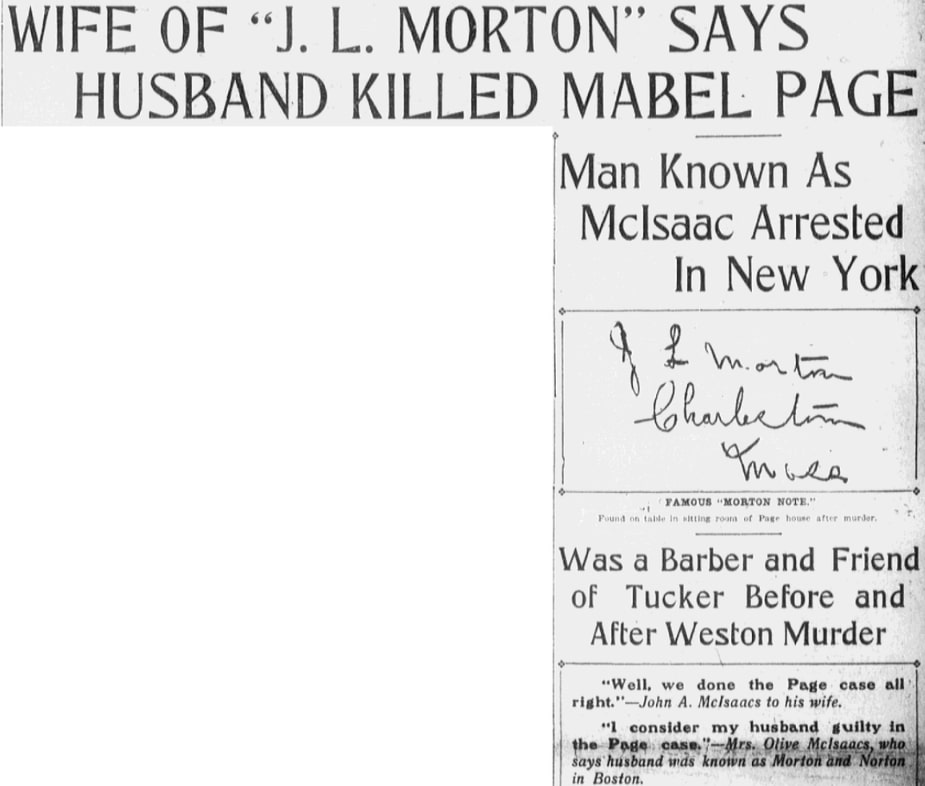
According to this article, Olive McIsaac explained that her husband, John Archibald McIsaacs, assumed the alias J. L. Morton when he worked as a barber at the Plaza Hotel in Boston. About two days after Mabel Page’s murder, McIsaacs, who returned from an out-of-town trip, told his wife, “Well, we done the Page case all right.”
When McIsaacs was arrested and brought to police headquarters, his wife was asked to repeat her story in front of him. She did so, causing her husband to turn pale and fidget in his seat. He was also a friend of Charles L. Tucker and had mentioned his name several times. The McIsaacs had lived in New York for about two months when she made the admission to the police.
“She is lying,” McIsaacs said.
“I’m not lying,” Olive answered. “I don’t know whether what I have been told is so or not, but I’m telling just what my husband told me.”
Olive filed an assault charge against her husband. But when a Brooklyn detective, Captain Harkins, asked her to repeat her accusation about McIsaac’s confession in the Page murder to J. H. Whitney of the Massachusetts State Police, she said, “I never made such a statement.”
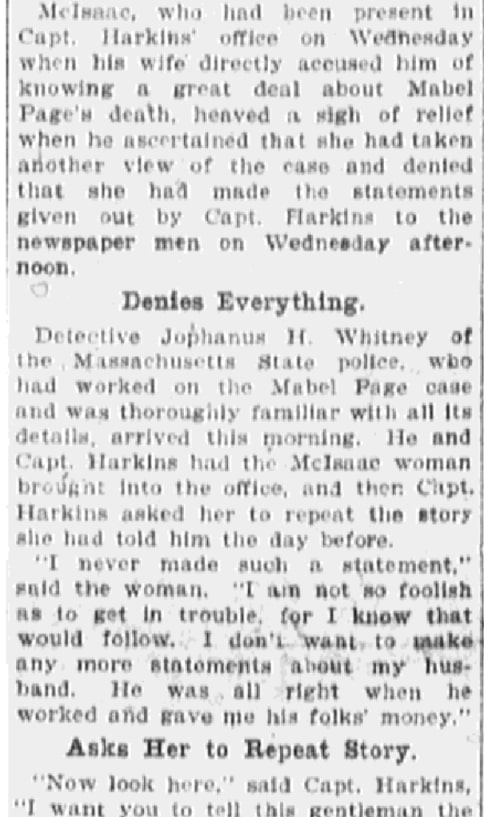
“Now look here,” said Harkins. “I want you to tell this gentleman the same story you told me yesterday.”
“I simply told you that I had my suspicions,” she said. “Never did the thought enter my mind that my husband had anything to do with the murder of that girl.”
Olive had given Captain Harkins a letter her husband wrote and asked that he send it to Boston so police could compare the handwriting to the mysterious note found in the Page home. When the captain reminded her about the letter, Olive said, “I simply brought you a letter, but not for any such purpose.” She admitted that her husband had treated her “brutally,” but she didn’t want him to go to prison. McIsaacs pleaded guilty to assaulting his wife.
Here is the mysterious note that was found at the crime scene of Mabel Page’s murder. It reads:
“J. L. Morton, Charleston, Mass.”
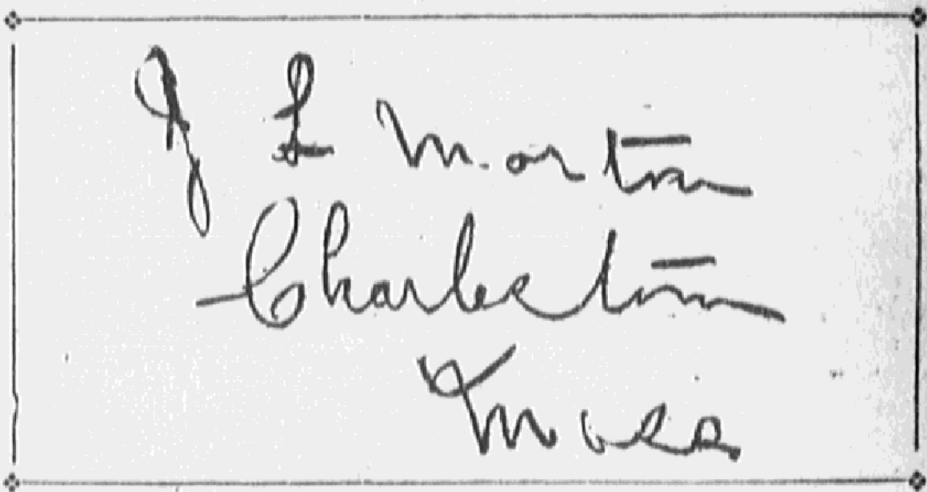
Reportedly, Charles L. Tucker received several visits in prison from one Olive Russell, which happened to be Mrs. McIsaacs’s maiden name. However, she denied she ever knew him, as did her husband. Captain Harkins concluded that Mrs. McIsaac fabricated the story of her husband’s involvement in the Page murder for revenge. Having followed the strange murder case in newspapers, Olive was fascinated with Tucker and wrote to him. The two exchanged letters and met in person. However, Tucker denied that he knew her.
Tucker Sentenced to Die by Electrocution
On January 27, as the McIsaacs caper ended, Charles L. Tucker appeared in court to receive sentencing.
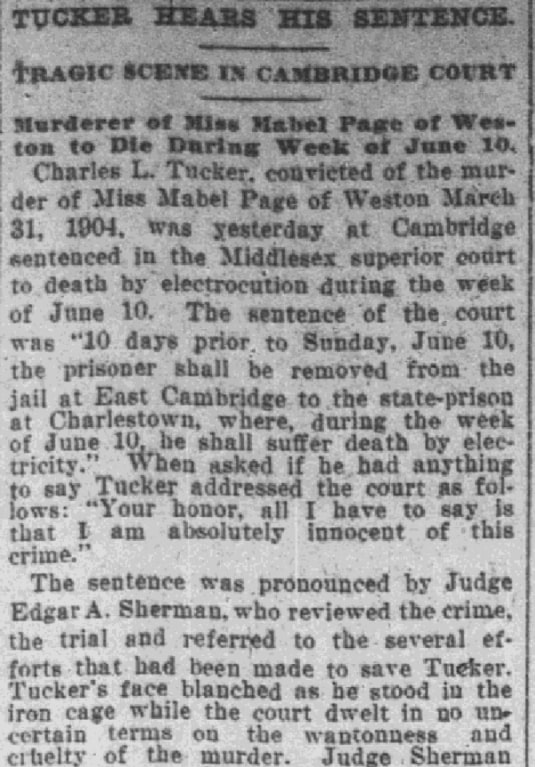
According to this article, Tucker’s face turned pale as Judge Edgar A. Sherman announced that:
“10 days prior to Sunday, June 10, the prisoner shall be removed from the jail at East Cambridge to the state-prison at Charlestown, where, during the week of June 10, he shall suffer death by electricity.”
A reporter observed an expression of relief wave over Tucker’s face, signifying the ordeal was over.
However, this case of strange twists had more surprises to offer.
Maine ‘Tramp’ Charged with the Murder
On 17 May, talkative and hard-drinking 30-year-old Jerry Hayes, who described himself as “very dangerous,” was arrested in Bingham, Maine, for the murder of Mabel Page. A woodchopper, Hayes – known by three different aliases, Hale, Moulton, and Morton – allegedly told his former landlady, Margaret Brown, that he was at the Page house on the day of the murder, but that he slipped out of state “before things got too hot.”
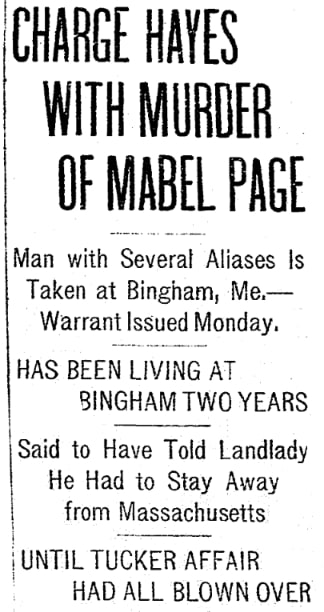
But the case against Hayes soon collapsed. At his arraignment two days later, he was discharged after a plea of not guilty.
Message in a Bottle
Then another twist: on 11 July 1906, 16-year-old William Hogan of Charleston, Massachusetts, gave police a bottle he had found drifting along the beach at Long Island.
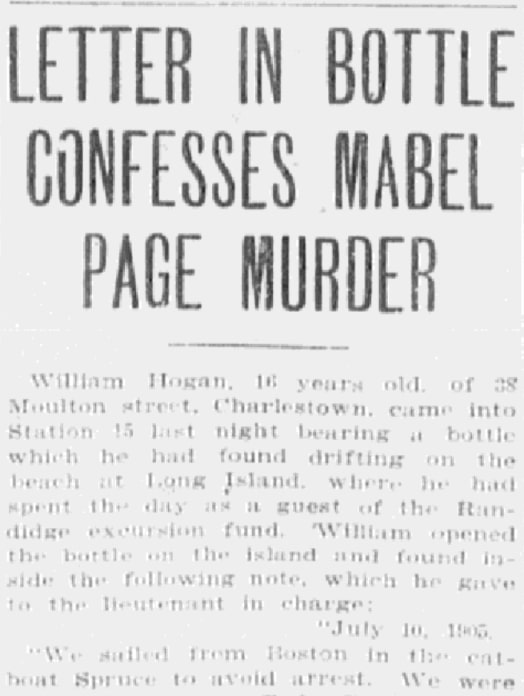
The bottle contained a strange message dated 10 July 1905 stating:
We sailed from Boston in the catboat Spruce to avoid arrest. We were caught in a storm off the Georges. Our mast blown out we are certainly lost. All hope is gone so a man in our crew sends this message in regard to the Mabel Page murder. He confesses he killed Mabel Page. We are on our way to Boston. Hoping Tucker has not been executed and that we may be in time to save him. We remain,
THE SHIPWRECKED CREW.
Police quickly dismissed the message in a bottle as a hoax.
Tucker Executed
On the last day of March, a petition for commutation of Tucker’s sentence circulated, and days later, the condemned man sent a personal appeal to Governor Curtis Guild requesting the same, declaring his innocence. The governor received a petition with 115,555 signatures on May 22. Governor Guild called a special hearing on the matter on June 5, but two days later, he decided “not to interfere with the course of justice.” Charles L. Tucker was executed on 12 June 1906.
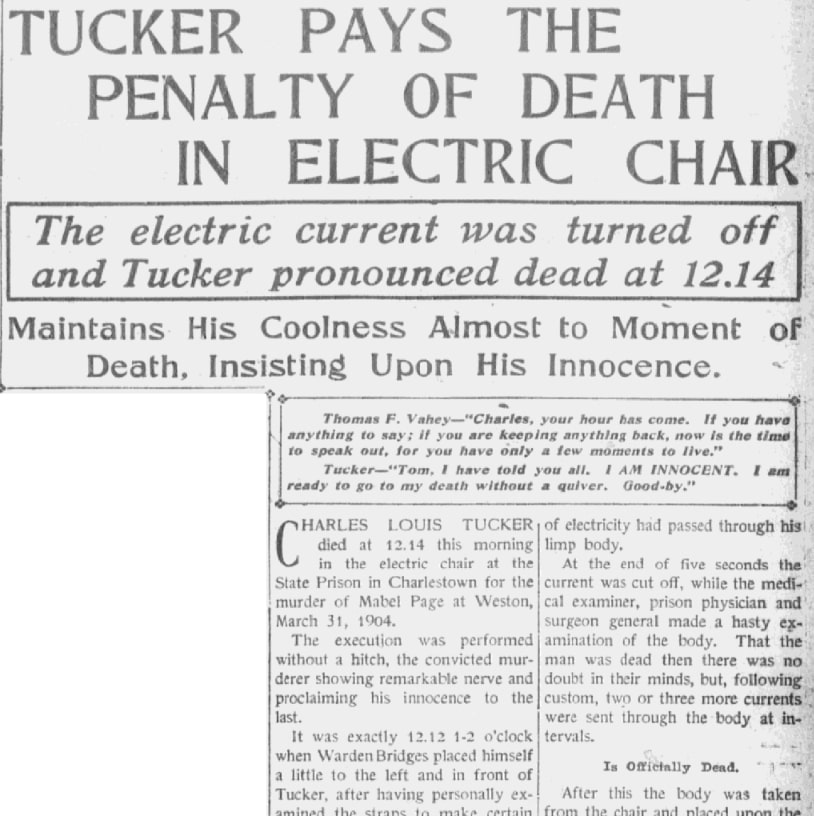
Edward Page died days before his 80th birthday on 22 April 1906, nearly two years following his daughter’s brutal murder. “He failed rapidly under the horror of this tragic affair,” stated his obituary. (Morning Sentinel, 23 April 1906)
Explore over 330 years of newspapers and historical records in GenealogyBank. Discover your family story! Start a 7-Day Free Trial
Note on the header image: Sherlock Holmes investigates a mystery.
Illustration credit: https://depositphotos.com/home.html
Related Articles:
